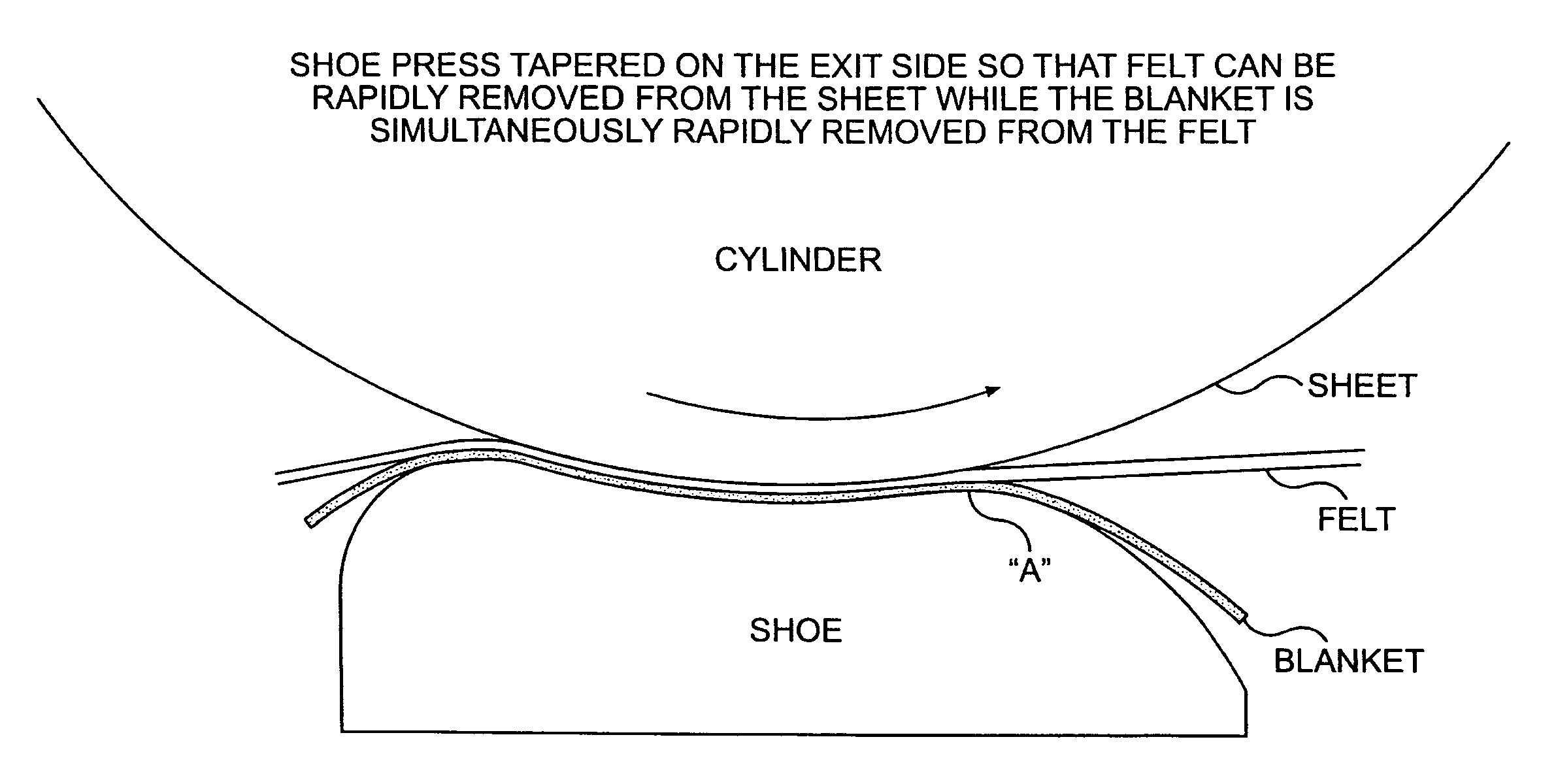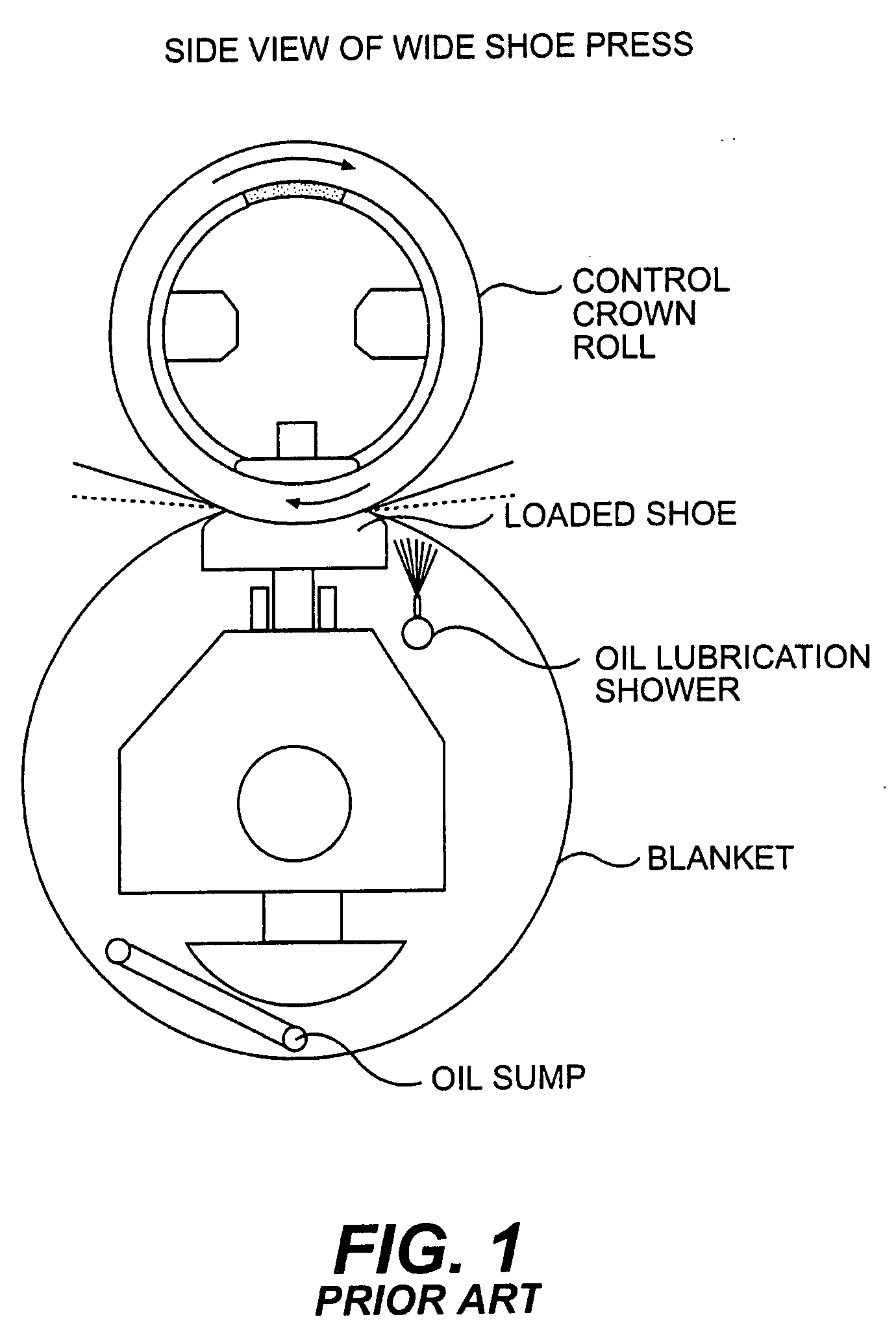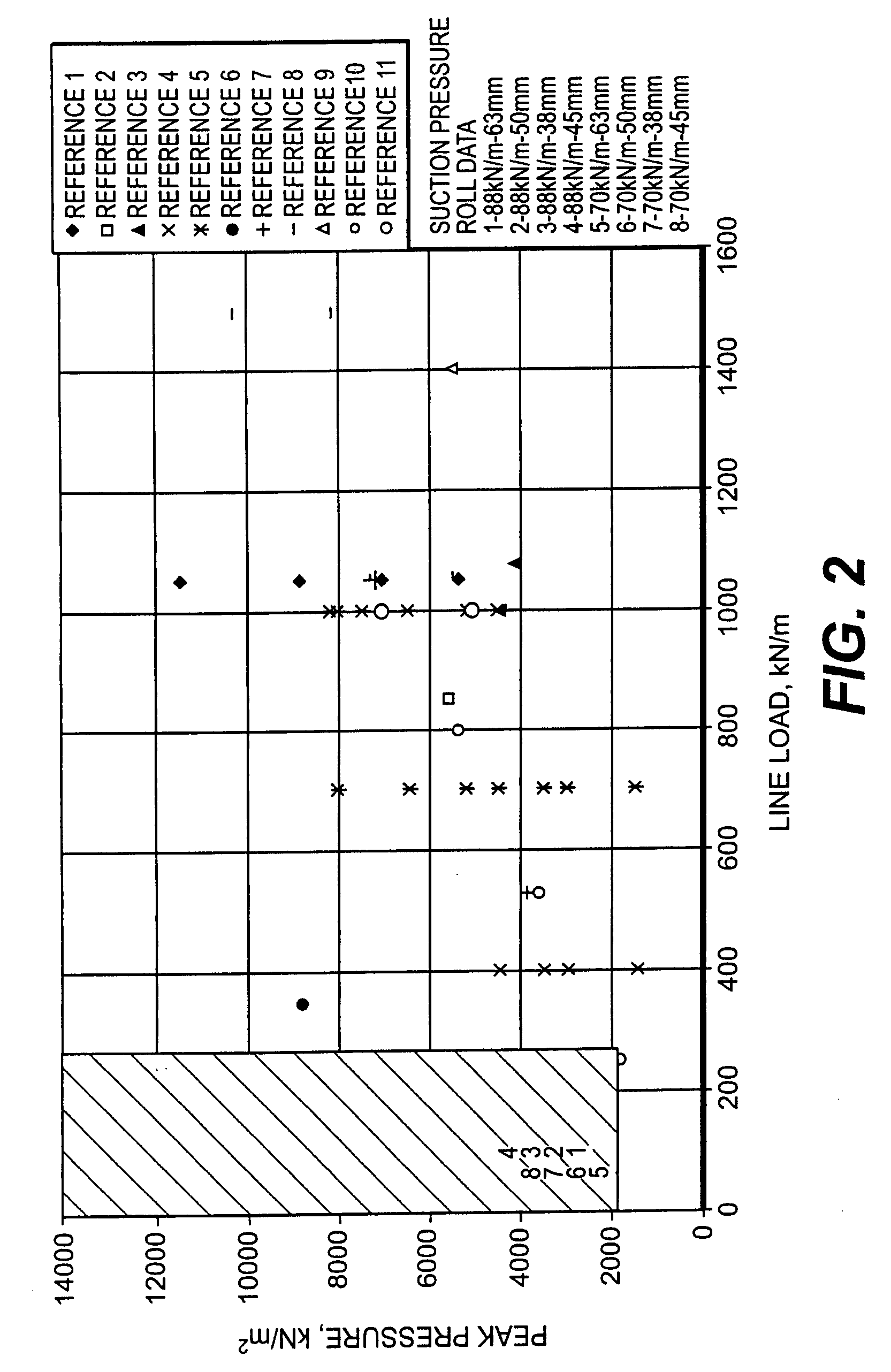Method for Maximizing Water Removal in a Press Nip
a technology of maximizing water removal and nip, which is applied in the direction of press section, non-fibrous pulp addition, papermaking, etc., can solve the problems of difficult to achieve high peak pressure in the nip, rolls that do not normally support the belt loop of the wide shoe press, and difficulty in obtaining the right balance of attributes
- Summary
- Abstract
- Description
- Claims
- Application Information
AI Technical Summary
Benefits of technology
Problems solved by technology
Method used
Image
Examples
example 1
[0144] A nascent web was formed on a Crescent-forming machine using a blend of 50 / 50 long fiber / short fiber refined to 23° SR freeness. Chemicals like wet strength agents or dry strength agents were not added to the stock. The basis weight of the sheet on the Yankee dryer was 8.5 lbs / 3000 ft2. Two pressing arrangements were used on the paper machine. In the first pressing arrangement, the sheet was pressed onto a Yankee dryer with a suction pressure roll. The vacuum in the suction roll was nominally 0.22 bar. In the second pressing arrangement, the suction pressure roll was replaced by a Yankee shoe press. The sheet was conditioned before the shoe press with a suction turning roll having the same size and open area as the suction pressure roll. The suction turning roll vacuum was nominally equivalent to the level used during the suction pressure roll experiments. After sheet conditioning, the web was pressed onto the Yankee with a shoe press. In order to obtain precise sheet solids ...
example 2
[0171] A punch press was used to perform dewatering experiments with different belt structures. An AMFlex 3S felt manufactured by Appleton Mills Corporation was used to dewater the paper web. The web basis weight was 8.9 lbs / rm. The felt dryness was controlled to 69.3% dryness by using blotters and a couch roll to remove excess water. Web moisture was controlled to 19.3% dryness by rewetting moist webs using a water spray. The webs were made from a 50 / 50 blend of northern softwood kraft and eucalyptus refined in a PFI mill to 510 ml CSF.
[0172] A smooth belt, a blind drilled belt and a grooved belt were used in the punch press experiment. The blind drilled belt had a bore area of 3.82 mm2, a bore depth of 1.76 mm, an open area of 22.73% and a void volume of 402.9 cc / m2. The grooved belt had a groove width of 0.66 mm, a groove depth of 1.41 mm, a pitch of 0.33 grooves / mm, an open area of 21.78%, and a void volume of 270.6 cc / m2.
[0173] The punch press was operated such that the avera...
PUM
| Property | Measurement | Unit |
|---|---|---|
| length | aaaaa | aaaaa |
| pressure | aaaaa | aaaaa |
| peak pressure | aaaaa | aaaaa |
Abstract
Description
Claims
Application Information
 Login to View More
Login to View More - R&D
- Intellectual Property
- Life Sciences
- Materials
- Tech Scout
- Unparalleled Data Quality
- Higher Quality Content
- 60% Fewer Hallucinations
Browse by: Latest US Patents, China's latest patents, Technical Efficacy Thesaurus, Application Domain, Technology Topic, Popular Technical Reports.
© 2025 PatSnap. All rights reserved.Legal|Privacy policy|Modern Slavery Act Transparency Statement|Sitemap|About US| Contact US: help@patsnap.com



